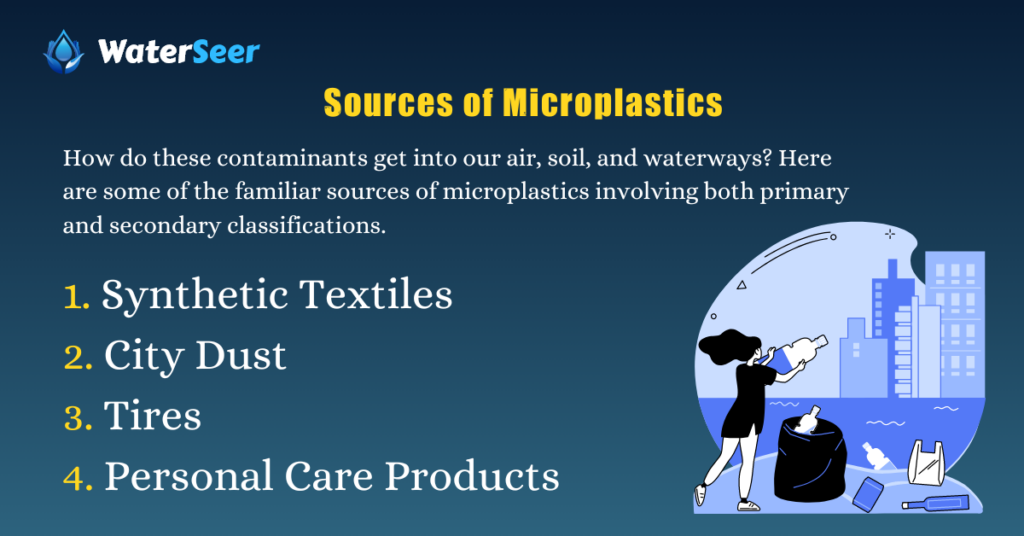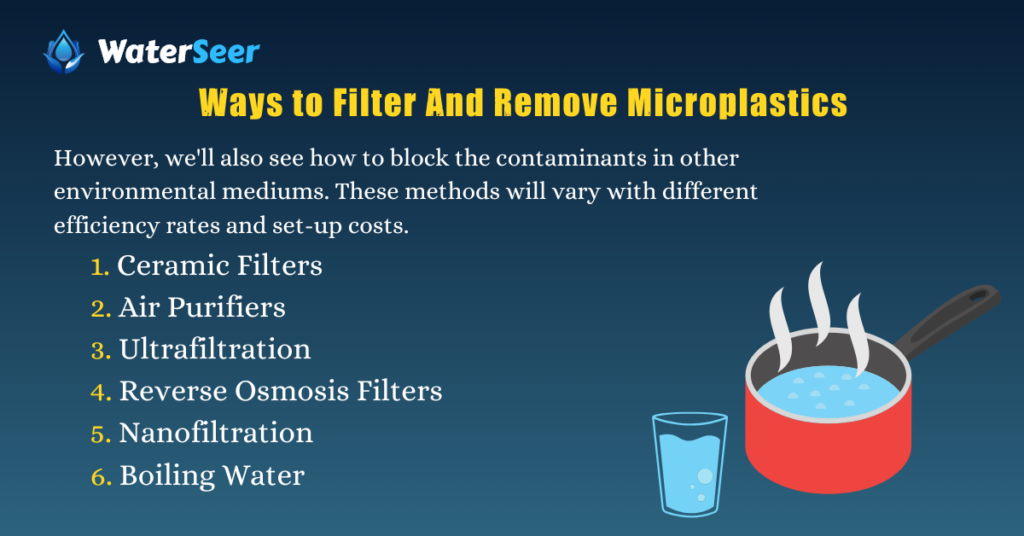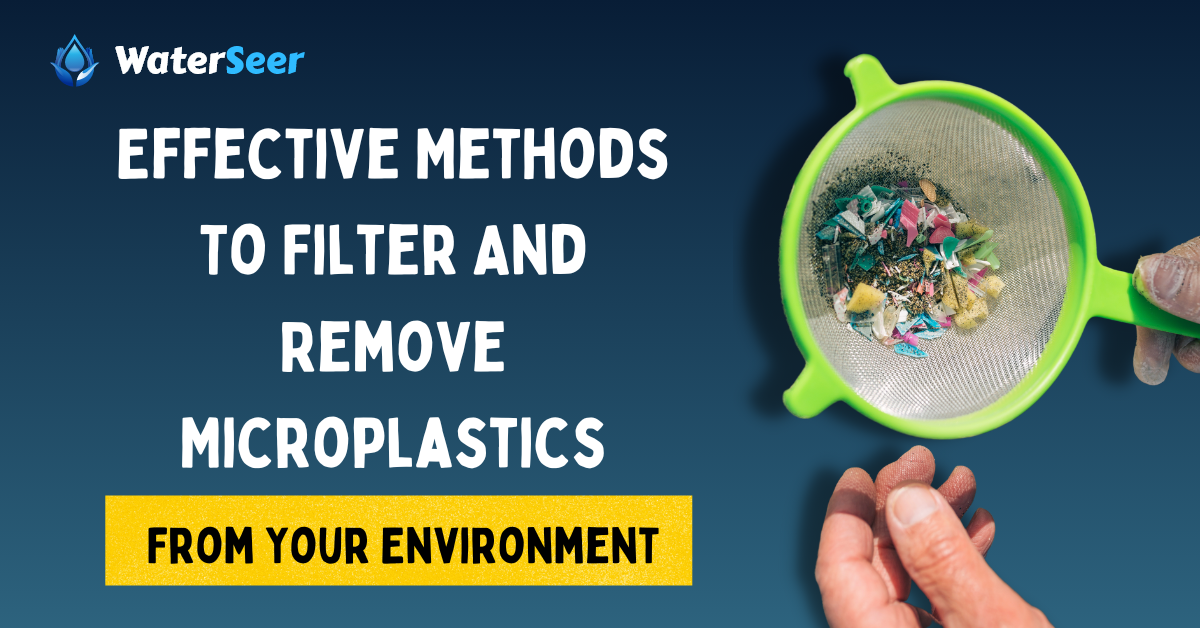The amount of plastics in our environment has risen to astronomical heights as they feature prominently in the packaging, manufacturing, and transport industries, among others. As typical of plastics, degradation takes several decades, so most materials become pollutants for the environment in different sizes.
While plastics piled up are common worldwide, especially around coastlines, the plastics we don’t see are silently becoming a disaster. They’re everywhere and equipped to cause severe damage to our health and livelihood.
The journey typically starts on land before ending in our waterways and returning to our home either directly as the water we drink or as contaminated food. Therefore it is important to discuss how to protect the environment and how to filter and remove the microplastic.
What is Microplastics?
Microplastics, as the name suggests, are tiny plastic fragments that are less than 5mm in size and are from commercial product development and are called microplastics. Their sizes mean they can hardly be seen with the naked eye.
One of the main differentiations for microplastics is in their production, with the primary section involving plastics produced at their micro level for use in different industries like in cosmetics. In contrast, secondary microplastics are derived from the breakdown of larger plastics made for other purposes.
These pollutants are everywhere, from various water bodies to soil and air. With such a spread, removing them and preventing the catastrophic damage they can cause to aquatic life and human health becomes even more complicated.
Sources of Microplastics

How do these contaminants get into our air, soil, and waterways? Here are some of the familiar sources of microplastics involving both primary and secondary classifications.
1. Synthetic Textiles
Synthetic textiles represent the most significant single contributor to ocean microplastics, with over one-third of all contaminants. Synthetic textiles are mainly used to make fabric, but washing removes them from the clothes and into the water, from where they start their journey to the environment.
2. City Dust
Another massive contributor to ocean microplastic pollution is a combination of different plastics, including abrasion from footwear soles, cooking utensils, building coatings, and more. All these particles move into the air, which is why they are called city dust.
3. Tires
Microplastics are a massive part of tires, providing rigidity and traction on the road. Fiction and heat break down the tires as they roll over surfaces which remove pieces of microplastics. Rain or air picks up these pollutants and transports them to larger water bodies.
4. Personal Care Products
Cosmetics and other care products contain a high amount of microbeads which are engineered microplastics for industries. After using these products and washing up, the microbeads follow the wastewater into the environment.
Dangers of Microplastics
Considering their spread and size, is it worth going through the stress of removing these tiny plastics from the environment? Microplastics release toxic chemicals absorbed by organisms leading to several adverse effects. Aquatic life sometimes mistakes these small plastic fragments for food, thereby ingesting these materials that are not only toxic but have no nutritional benefits to the organisms.
These plastics and their toxicity can reach humans directly when they drink water contaminated by microplastics leading to health hazards like neurotoxicity. Microplastics can also get into humans indirectly from the consumption of aquatic animals that have been exposed to these toxins. The toxin can be transmitted to humans after consumption.
Ways to Filter And Remove Microplastics

Since water is our environment’s primary carrier of microplastics, we’ll see how we can filter and remove these pollutants. However, we’ll also see how to block the contaminants in other environmental mediums. These methods will vary with different efficiency rates and set-up costs.
1. Ceramic Filters
Ceramic filters can block particles as small as 0.2 mm in size, including most microplastics, through the help of its natural ceramic technology. It features ceramic filter cartridges found in multi-stage filtration systems, under-sink filters, and other single-stage water filters.
2. Air Purifiers
Even though microplastics are prevalent in water, they still have a fair share of air, especially indoor air, which is why air purifiers are essential. Air purifiers have high efficiency at removing particles in the air, including microplastics.
3. Ultrafiltration
The ultrafiltration membrane sports a pore size between 0.02 to 0.05 microns, blocking microplastics in water and preventing them from passing the filter. It is similar to reverse osmosis filters but less sophisticated in terms of efficiency since the pore size is more prominent. Nevertheless, their sizes are small enough to trap most microplastics.
4. Reverse Osmosis Filters
RO is one of the most effective water filters, with its 0.0001-micron pore size blocking even the most minute microplastics in your water. Their efficiency is tied to their multi-stage filtration that removes pollutants based on their structure or size. You can easily add this filter to your home setup as a point-of-use system or among the whole house unit.
5. Nanofiltration
Nanofilters are highly effective microplastic blockers due to their small pore sizes, measuring as low as 0.0001 mm. It will filter out all plastic waste in the water, including other harmful viruses and bacteria. Combining nano filters with other filters like activated carbon gives the best results as a water purifier; however, for strictly microplastic removal, the nano filter is enough.
6. Boiling Water
Microplastics will be destroyed in extreme heat, so boiling water for about 20 minutes can remove these pollutants from your water. It is simple and requires no prior experience or setup to use. However, its practicality is in question as it cannot be done for large amounts of water, and it takes a lot of time to boil and cook before use.
How to Minimize The Effects of Microplastic Pollution

Microplastics are dangerous when inhaled or injected through food and water, with prevalent lung and gut problems. Minimizing its effect will ensure you lead a healthy life, so here are a few ways to achieve this:
- Vacuum frequently: dust particles tend to carry a lot of microplastics, and cleaning often will reduce the pollutants in your home. Vacuuming is an effective way to reduce plastics without raising them into the air.
- Reduce/remove carpets: carpets hold dust which can quickly get into the air with any slight disturbance. Reducing the carpets you have or completely removing all will reduce the dust in your home and, ultimately, the microplastic in the dust.
- Ensure proper ventilation: indoors typically have more microplastics than outdoors, so an excellent way to reduce the pollutant in your home is by ensuring adequate ventilation. Good cross ventilation in your home will help the microplastic-heavy air to get quickly replaced by fresh air from the outdoors.
- Use effective filtration systems: some filter units with larger membrane pores are ineffective in removing microplastics. It is vital to utilize filters with a lower than 0.1 mm pore size to filter microplastics from water.
- Eat less Seafood: this is a little extreme, but reducing your seafood intake will minimize your exposure to microplastics as most of these aquatic lives have these plastics ingested.
FAQ’s
You may have some unanswered questions while looking for effective ways to remove microplastics from the environment. Here’s our compilation of questions about microplastic removal and their answers:
Are microplastics present in bottled water?
Yes, bottled water has been shown to contain microplastics due to the presence of Bisphenol A or BPA. Prolonged exposure to BPA can cause high blood pressure and heart disease.
How do microplastics enter our water supply?
Tiny plastic fragments from tires, synthetic textiles, cosmetics, and more are washed off and flow into water bodies which can lead to the ocean or our homes.
Are microplastics present in the air?
Tiny pieces of plastic are constantly lofted into the atmosphere, affecting clouds’ formation. These can potentially threaten the environment, impacting temperature, rainfall, and climate change. The air can carry these plastic particles in the form of dust, with city dust among the significant sources of microplastics in the environment.
Can microplastic toxins be transmitted from animals to humans?
Eating animals exposed to microplastic toxins can harm humans as these toxins can be passed to humans with dangerous effects.
Conclusion
Microplastics enter our environment through various sources, often categorized into primary and secondary sources. These plastics can be found in water and air, requiring a different technique to block the pollutant and prevent severe health hazards.
Water and air filtration systems are among the main methods of removing microplastics from the environment. Keep your environment dust-free to reduce your exposure to tiny plastics.

